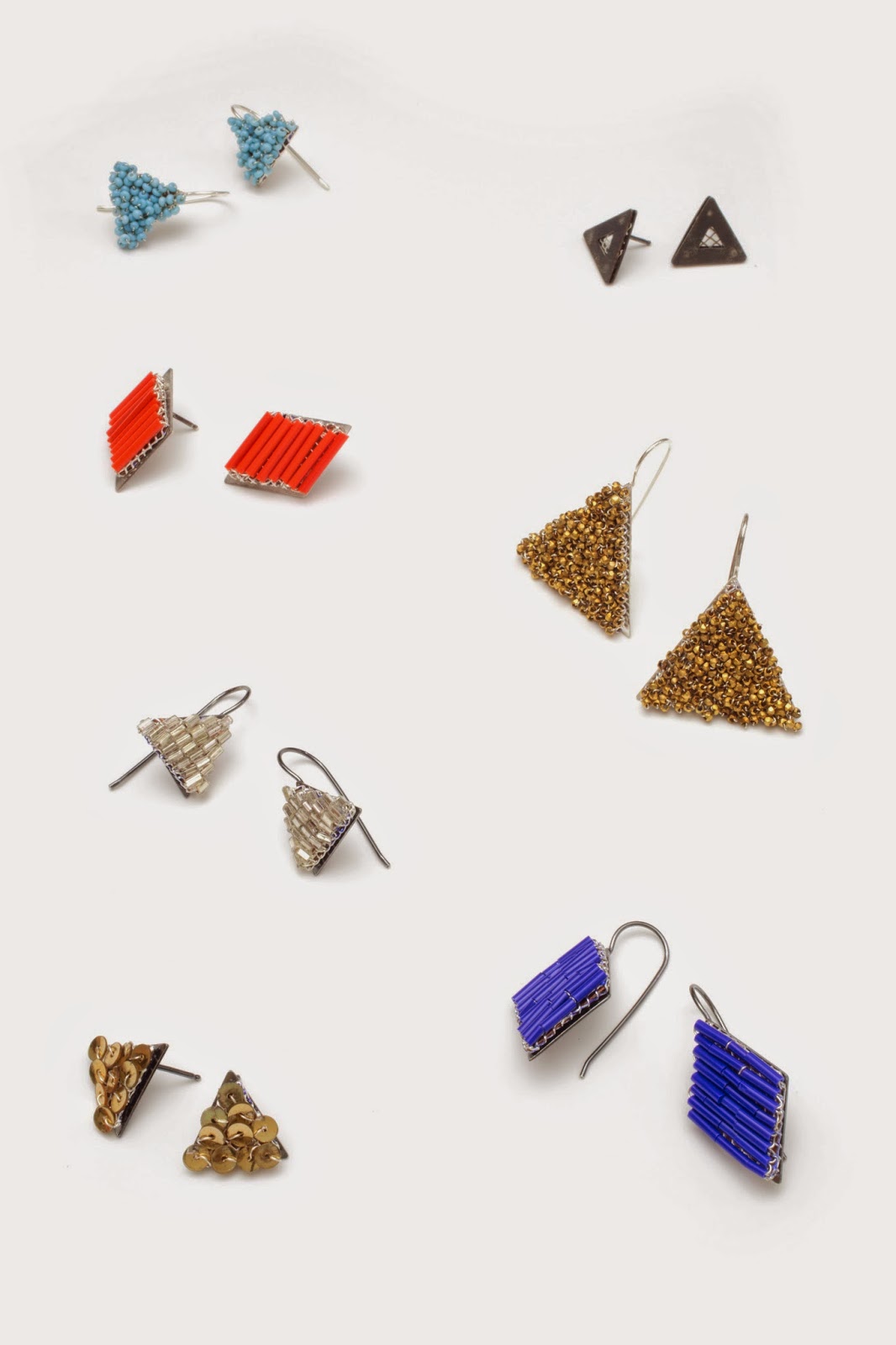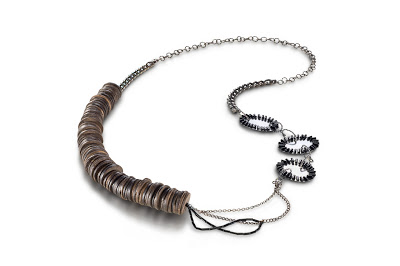Strandline: grouping
On any given beach, it’s easy to find the strandline: just look for the length of driftwood, detritus, and scrap that create an undulating path upon the sand, directly above the water line.
Jonathan Anzalone + Raïssa Bump
For jeweler Raïssa Bump and painter/woodworker Jonathan Anzalone, this debris field provides a wealth of material and insight for their show “Strand Line.” From such disparate inspirations as bottle caps, paper clips, and driftwood, Raïssa and Jonathan, who outside of this collaboration are also studio and life partners, have created a show that speaks to commodification and its inherent presence in even the wildest pockets of nature. However, instead of passing judgment on a culture of excess, “Strand Line” chooses to amplify moments of subtle beauty from these collected materials, displaying them in new ways through mobiles, kinetic and fixed sculpture, and jewelry.
“We did walk a lot on the beach, literally on the strandline collecting these things. It’s fun for us to go out and draw inspiration from it and to make things from these parts and pieces,” explained Raïssa. “This show is a culmination of years of collecting, and looking for colors, little bits of shape, and composition.”
When asked about what they look for when walking the strandline, Jonathan explained, “You see those compositions and bits of color that are exciting and you bend down to pick them up it has a little story: there’s the beginning of what it was, it’s been worn down and weathered and became another shape, but still references something we often know. I like the idea of taking these pieces and arranging them and enabling one to see it from a different perspective, and quite beautiful when you put it in a different context and arrange it.”
Indeed, Strand Line is a beautifully arranged exhibition. Raïssa and Jonathan went so far as to ask Shibumi Gallery owner April Higashi to hide the numbers identifying each piece for the sale directory during the opening. This way, the colors and shapes of all of the pieces weren’t marred by tiny round stickers. The resulting flow of the show, its interconnectedness of material and composition, is undeniable.
Miscellaneous earrings; photo by tiny jeweler photography
Mesh Isosoles Triangle Earrings; mesh and sterling silver, copper.
photo by tiny jeweler photography
A sense of interconnection, balance, and proportion all played large roles in the show. “Balance and proportion—or lack of—is a big part of both of our work,” explained Jonathan. “Balance is a recurring theme. We’re both formalists, colorists, minimalists, We both share that delicate balance and how sensitive some of these compositions are. They look very simple, but they’re highly considered.”
Mobile Detail
photo by April Higashi
Perhaps the most evident examples of this delicate balance are the mobiles that Jonathan and Raïssa created. The mobiles, including “Mobile Footprint,” “Confluent,” “Catenary,” and “Bow,” are a natural extension of both artists’ emphasis on balance, of creating harmony between all of the objects, whether they were found or made. “That’s where the idea of the mobile came from,” noted Jonathan. “It was a perfect way to have these objects exist together without a hierarchy. No one object was more important than the other, it’s just a balancing act and a collaboration between all of these materials.”
Bow; sterling silver, copper, found object, wood, 22k gold leaf, nylon.
photo by tiny jeweler photography
A meditation on shape—particularly on grids, hexagons, and puzzles—also guides Strand Line, as does use of color. Raïssa’s background in textile design and techniques serves as a guide for many of the pieces in Strand Line in terms of both construction and color. “I knew that for this show I wanted to bring back more color,” she explains. “Jonathan and I share a love for color, and it was great to bring color back for this exposition.” One of the most vibrant examples of color use is the sterling and fine silver, copper, and glass bead “Colorful Equilateral Triangle Brooch,” which consists of five separate shapes, including triangles, a square, and a rhombus, all of which can be rearranged, grouped, and worn however one desires.
As for the emphasis on shape, Raïssa explains that it was a helpful tool for focusing and creating boundaries. “We noticed in our studios separately that the hexagon was coming up at different moments. We also were interested in the tangram puzzle, puzzles in general, and how you can put things together in different ways. It was fun to see what can happen within the boundary of a shape, such as breaking a hexagon up into different shapes and putting it back together—the interknit possibilities of what can happen within a very structured pattern.”
In the end though, this show is primarily about respecting the gesture of each original material or object. For instance,Untitled, a mounted wall sculpture, is made from kelp, paint, and sterling silver. The kelp that Jonathan found on the strandline of the same beach was twisted in two arresting spirals. Jonathan cut a clean line on each end of the two spirals, bound them together, and painted one side black and one white. The resulting piece is a mesmerizing study in captured motion.
“For me a lot of my studio practice is collecting these objects, having them around me, and sometimes using them,” explained Raïssa. “The ideas come to me through the making process. I save a lot of pieces throughout the years as explorations that don’t become finished objects the moment they’re made, but maybe years later. This show was an exciting way for me to level the playing field between high and low, between precious and not precious, between manmade and natural.”
Strand Line: Raïssa Bump and Jonathan Anzalone can be seen at Shibumi Gallery through October 5th.
Written by Elka Karl









